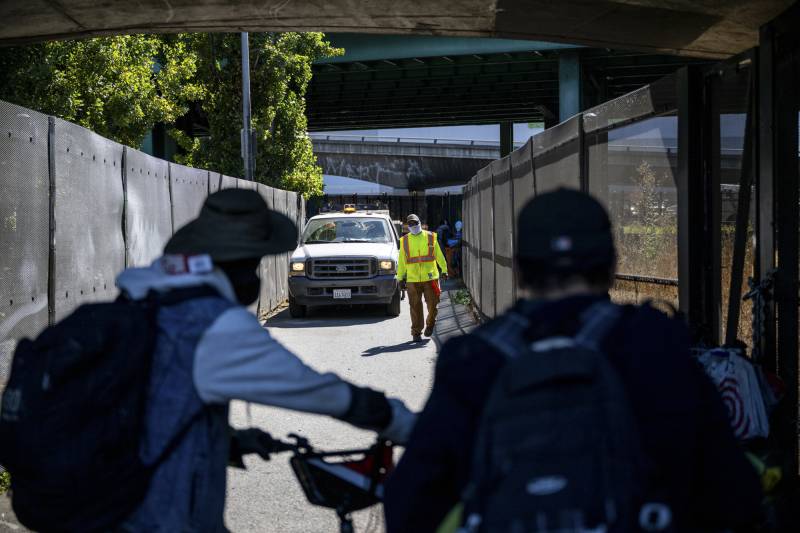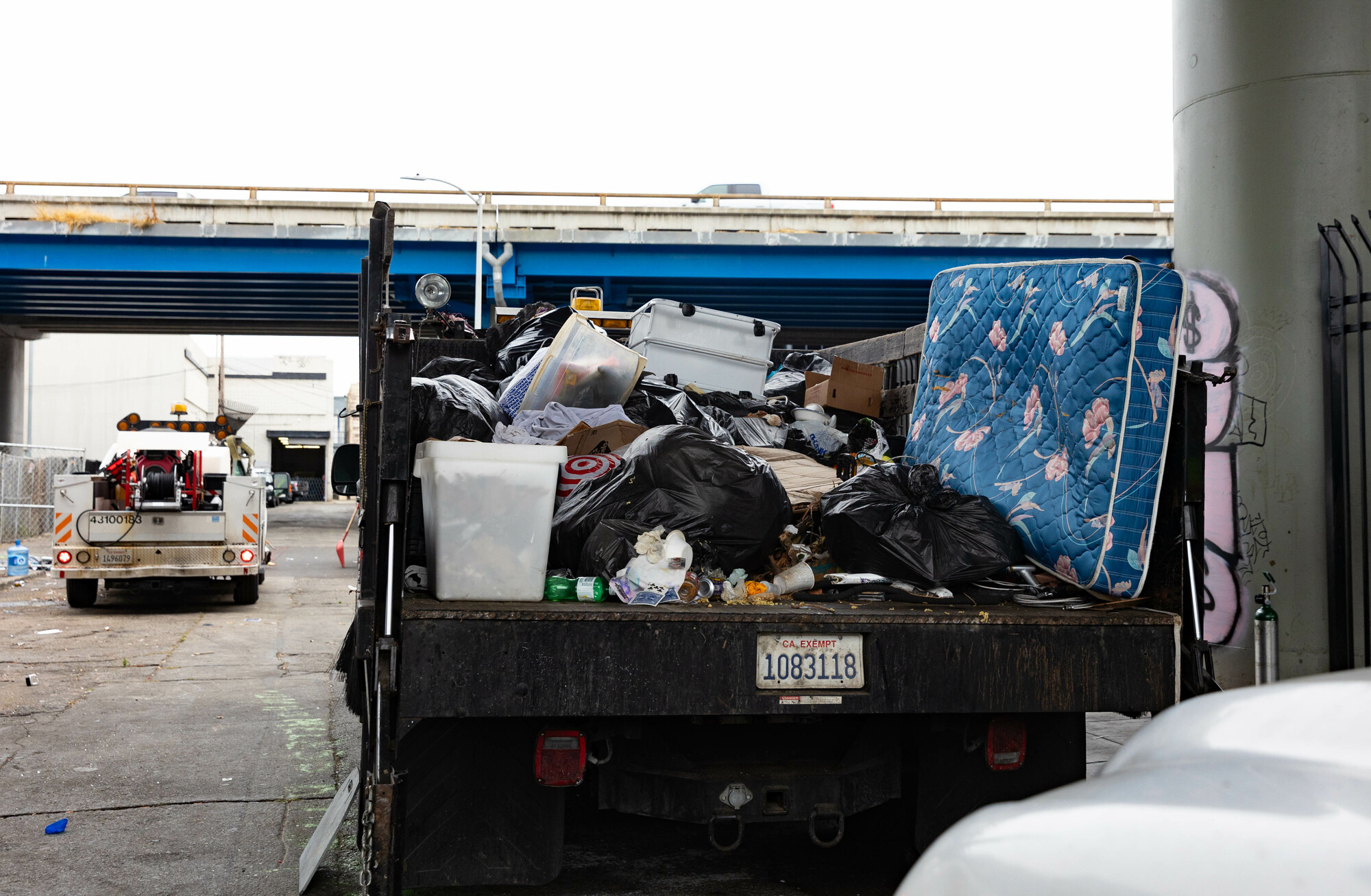City workers also need to leave a notice behind saying where the belongings have been taken, but Kashyap is reluctant to “suggest that this always happens perfectly.
“We know that, unfortunately, despite having policies on paper, not all jurisdictions are going to follow their own policies and the law all the time,” she said.
Document what’s happening
Kashyap said if you have a phone, you should take photos or videos as well.
Striving to “document as much as they can” is a protective measure that people should take “if they’re in a situation where they’re worried that their rights are being violated if the city is not following its own policies or procedures,” she said.
If law enforcement officers are also present at a sweep, the First Amendment protects the right of everyone — including unhoused people — to photograph and video record the police, particularly in a public place like a sidewalk. Read our full guide on filming the police.
ACLU Northern California attorney Do emphasized these First Amendment rights for unhoused people and said that such documentation is a part of how folks can “still advocate for themselves.” Footage like this, Do said, can help a person raise awareness and “petition their government for real solutions.”
“The media and the public can see — and have a right to see — what is happening with regard to these sweeps … which protects against government abuses,” Do said.
Seek support from local legal aid
If you are concerned that your belongings have been trashed after trying to track them down, Kashyap said people should seek out free or low-cost civil legal services or local legal aid from organizations like:
The San Francisco Chronicle also has an extensive database of organizations dedicated to addressing homelessness in different parts of the Bay Area.
Join forces with others in the same situation
The right to organize is something that unhoused advocate Blalock is passionate about, saying that “we only have as much power as we organize to have — and the only way we’re going to be able to fight this is by organizing and by coming together.”
Blalock and Janosko were both part of the dissolution of Wood Street Commons RV and makeshift tiny home community by the city of Oakland last year. Most of their neighbors still haven’t been housed, Blalock said, while they have both managed to find housing.
“We’re incredibly lucky to say that, but I’ll be honest with you … we deal with an immense amount of survivor’s guilt,” Blalock said. “The majority of our community is still out here, and they’re being arrested or they’re being targeted, and they’re being attacked and they’re dying. It’s great that we got housing. But at the end of the day, it doesn’t mean very much if we don’t have our family anymore.”
The experience spurred Blalock to get involved with organizing — like working with the Poor People’s Campaign and the homelessness union. Blalock has actually been going to different encampments to get people to sign up as members of the union.
“Most people that I’ve talked to about it are on board,” they said. “We’re just tired of being pushed around.”
“This is not something that happened overnight,” Blalock said. “You can only push people so far into a corner before they come out swinging.”
If I am housed, how can I help my unhoused neighbors?
Kashyap said it is important for housed people to also know the rights of their unhoused neighbors — and one way they can help is by stepping up in the middle of an interaction with a city worker.
If a housed person sees “a situation where it looks like someone’s belongings are being summarily destroyed [or] thrown away,” then “stepping in and just asking questions” can be effective, she said. But first, Kashyap said, you should ask the unhoused person for their permission before engaging any city worker on their behalf: “‘What’s going on here? Can I help you [the unhoused person] out here?’”
When it comes to engaging the police in such a situation, Blalock said that they wouldn’t encourage anyone to put themselves in harm’s way — and urged anyone intervening on behalf of an unhoused person to keep a cool head.
“You can get upset, and you can get mad, and you can yell and curse the cops out and all that. But at the end of the day, the unhoused community are the ones that get the retaliation,” Blalock said.
Kashyap said she has seen housed people, during sweeps in progress, intervene and help pack up the unhoused person’s belongings before city workers pick them up, “and move them so that they don’t get either trashed or taken to a storage yard.”
But “bearing witness” by taking videos and photos is an “incredibly powerful thing folks can do as bystanders,” she said. “Especially as we see more and more aggressive responses to street homelessness. Responses that prioritize enforcement and punitive measures over services and care.
“It is incumbent on all of us, as a community, to keep our eyes open,” she said.



